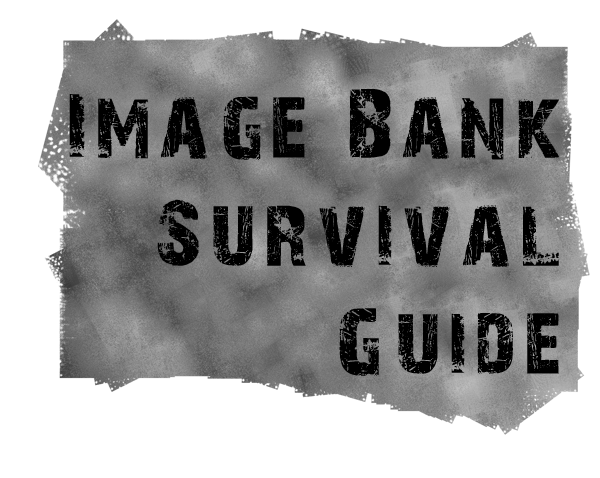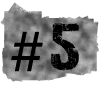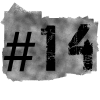-
 Français
Français
-
 English
English

- Are you looking to make a regular income from your most beautiful images?
- You are a professional but don't know how or where to start?
- You are wondering which image bank to choose? One, two, three or more?
- You don't know what an image worth? And even less at what price you could sell yours?
- You are wondering what is the difference between a Macro and a Microstock agency?
- Do you have to give in to the Siren of low-cost websites?
- Or should you give in to the temptation of high-end image banks?
- Wondering if you should lock yourself into an exclusive contract with a single agency?
- What percentage of sales will you be offered? Is this the standard?
- Should I take photos, videos, or both?
- May I sell my images directly on my website?
- And what can I do with my images outside of stock photography?
If you ask yourself one or more of these questions, then you've come to the right place
It also means that you feel a bit lost in the nebula of image banks, and to be honest, there is reason to.
The whole point of this Survival Guide is to enlighten you without any fancy talk. We've been there. In the 35 years that we have been practicing stock photography, a certain amount of experience has been acquired. An intuition, and a desire to transmit it.
We will therefore give you a whole series of advice and answers to help you make one of the most difficult decisions for a visual artist who wants to live from his creations: who to trust, under what conditions to practice, and for what benefit in the end?
We start from the premise that you are not an amateur and that what you are looking for is not so much the glory of being published as the money that will allow you to pay your bills and feed your next creative projects. For you, making images and making a living from your royalties is a job, not a hobby.
So let's get started, because we have a long way to go.
It will be difficult and full of pitfalls, but if you hold on, what an exciting, rich and independent life awaits you!
Follow the guide!
The Image Bank Survival Guide(for professional visual artists) Written by Sami Sarkis, photographer-filmmaker, © copyright HOsiHO - All rights reserved, even for partial reproduction. |
About the author - @samisarkis
Sami Sarkis, started his career as a professional photographer in 1984, with AAA photos and Sipa Press in Paris as his first agencies. Very quickly he embarked on multiple world tours, always with a SLR camera on his shoulder, to discover the cultures, peoples and landscapes of the planet, before tasting other disciplines both in photo and video, such as the making of nine documentary films including Maya Land, featuring Rigoberta Menchù, winner of the Nobel Peace Prize in 1992. His images have been published thousands of times, thanks to his numerous contributions to large image banks.
Sami has also known the early beginnings of digital distribution on Cd-Rom in 1993, with Corel and Photo-Alto. Then, as a photographer, he joined in 1996 the first online photo library on the internet, Photodisc, which was later sold to Getty Images, where he still keeps several thousands pictures. Always on the lookout for new technologies and new initiatives, he launched his first website in 1996, www.sarkis.com, and by 2001 was among the first contributors to Alamy, which at the time had only 100,000 photos.
In 2006, he immediately took part to the new Photographer's Choice collections, launched by Getty Images. Let's also mention the agency Agefotostock, who also represents his work in Spain and Latin America, and recently the setting up of his own agency HOsiHO, specialized in aerial imagery by drone and helicopter.
Why this Image Bank Survival Guide for Visual Artists?
Because selling one's visual works - illustrations, photos and videos - is today a multidisciplinary expertise.
It is no longer enough to have talent and a stunning portfolio to be able to claim to live properly from one's artistic and creative work. It is necessary to know how to navigate in troubled and changing waters. Spending your time anticipating, analyzing, understanding and deciding, if possible judiciously, because any mistake is a serious waste of time in a universe where everything goes very fast.
The Internet and digital tools have opened up fantastic perspectives for image creators, who, depending on their affinity with these tools and their talent for communication, have been able to conquer the world in just a few weeks, ensuring great visibility and a great community of followers on social networks. But for a few who make it, how many remain anonymous and lost in the depths of the Web?
This guide is not intended to show you the paths leading to the Star Influencer that you will probably never be, but more simply to reveal the steps and traps that await you. This guide alone does not pretend to cover everything, especially not the legal part concerning the transfer of copyrights, but it should help you make the right choices and begin the pursuit of a great activity, on a solid and well thought-out basis, by and for you.

Income curve 2001/2020 generated by a photographer
on a single image bank with a stock of 15000 photographs on very diverse themes.
The Golden Age of image banks is over since 2010
Forget right away your pre-2010 references about the abundant, juicy and rewarding sales that we, the dinosaurs of the stock photography industry, enjoyed between 1980 and 2005/2010. As the curve above clearly confirms, this Golden Age is definitely over, partly due to the advent of digital technology for image production and distribution.
In just a few years, digital technologies have made it possible to reshuffle the cards. Goodbye small photo agency of a few square meters that receives you with your slides folders and the magnifying glass glued to the eye ready to rejoice (or demolish!) the photographs that you were submitting, with an appointment, and which, like magic, were going to regain life on a light table, under the curious and scrutinizing eye of the founder!
Goodbye analog films, labs and its chemical smells, the SLR mechanics, goodbye also the video tape that gets stuck in the VCR, the 15 kilo video camera, and the lead batteries that bore their name so well...!
Goodbye Fedex or DHL shipping. Goodbye the relationship with a dedicated publisher. Goodbye coffee and the warmth of a moment suspended between Reality and our Dreams.
Goodbye also the meetings with our colleagues at the Image, Video and Photo Shows, so many opportunities to resource oneself and to get out of one's solitude, to progress too.
Goodbye to this impression of being a rare witness, a privileged one, a concept artist, a studio or Nature(s) artist.
Gone are the days when we were Individuals full-fledged for Our stock agency.
Hello Crowd-Sourcing, Anonymity, Upload and Download, screens and keyboards, memory cards and FTP.
Hello also the Dilution of our images in huge and endless collections of the internet.
Hello free, or so cheap images. Hurray for copying, piracy, malfeasance, and the questioning of Copyright.
Hello Smartphones and e-commerce platforms that make each of us a potential Visual Creative. At least once in a lifetime, as David Bowie used to sing: You Can Be Hero, Just For One Day !
And almost everyone is, or will be, a photographer/video maker at least one day in his or her life, preferably on Sunday!
The absolute paradox is that it has never been easier to sell and produce images.
For an artist, thanks to digital technology, the learning and progression curve is very fast. Trying things, seeing them immediately on a screen, starting over and improving, is child's play.
For an image bank, or an artist who wants to sell directly, in just a few clicks, it is easy to be visible on the web and offer thousands of images to billions of people!
Everything is simpler, immediate, accessible, and inexpensive, in appearance only. When you look at it more closely, as we will do in this guide, it becomes much more subtle and complex. Especially because of the hyper-competition it generates.
It' s easy to do? It' s immediate, simple and inexpensive? So it considerably broadens the field of insiders who will play with, or against you, with consequences that are not always very positive.
Without meaning to play the nostalgic nerd on the level of 'It was better before', we just wanted to recall what was done before the digital era.
An era that we do love, but not blissfully!
What if we start the journey?
Ask yourself the right questions, and be patient
You should start to identify your primary goal.
What are you looking for when joining an image bank? Is it an additional source of income or do you want to live from it full-time?
In both cases, you will have to be very patient!
The time to put your first images online will take an average of 3 to 6 months in most cases. The time to see the first financial returns is another 6 months - minimum - before you know if you made the proper choices.
In other words, the road you are about to take is long and uncertain. The unit of measurement for time is Year, not day or week.
There is no Golden Path, and failure is part of the great speculative game you are about to play.
Speculative, because your images have not been ordered by anyone. No one is waiting for it, no one needs it.
In this case, this is why nobody, except the quacks, can guarantee you sales, an income, and certainly not steady and substantial.
If you are not disheartened, let's move on to the second point!

Evaluate yourself - Be uncompromising - Be specialized
Start by looking at the images of your peers. Where do you stand?
If your creations suffer the comparison with the best artists in premium image banks, then you have a chance to monetize your own.
Otherwise, go your own way because mediocre images, without originality, without creativity, technically flawed, even if there are exceptions, will not sell, or only a little. You'll be disappointed and you'll have lost one or two years for nothing.
Now, gather your most beautiful images and set a trend. Get help from other people's eyes, don't judge yourself. This job is eminently solitary and that's why you shouldn't stay locked up in front of your artwork.
Show it and question the other person's gaze. Don't be offended by a negative remark. On the contrary, feed on it!
Therefore, this tendency, the one drawn by your favorite images, will be your Speciality. The one on which you will bet everything from now on.
Why is that? To dig a furrow. To make your mark. To improve and attract attention.
And finally gain recognition: "Hey, I know the name of the guy that took this picture!"

Bet it all on the 1000
Your image bank portfolio must be large enough. You won't earn anything with less than 1000 photos or videos available online.
And when we say 1000, it's 1000 images on 899 different subjects, not 1000 images on 200 different subjects.
It is thus necessary to play variety, quantity, and always with the pre-requisites that are the Artist's Eye and technical mastery.
Why 1000 ? To rake wide from the start.
As we told you at the beginning, it is a speculative game. No one knows where the demand is, so don't always play the same cards. Play as many different cards as possible. At some point, you will know, by yourself and for yourself, what works, what interests customers using image banks.
There is no other way to know a market. You have to probe it with the best of products, and the maximum of choices.
Never forget: the day you enter an image bank, you also become a businessman or woman!
No need to lie about it: you will have to count, calculate, anticipate, choose, refocus, put a brake or accelerate on what works and what doesn't work.
In short, you will have to make decisions all the time. Do not let yourself be overwhelmed by failures and always remain pro-active and alert.
Feed your Portfolio over and over again, make it grow so that you never let it fall by the wayside, or it will be the end of your foray into the image bank world. We'll talk about it later.
|
If you are still with us, |
How does it work and what is the purpose of an image bank?
Like a middleman who takes a commission on every sale!
Obviously, you understood that, except that to get there, there is quite a structure, an organization and a management, preferably flawless.
First of all, you have to build a collection with a large choice of images, if possible outstanding, on one or more strong themes. For example, HOsiHO is aerial and timelapse.
To build this image content, you need contributors who trust you and who think that the time they will spend submitting images will pay off with sales. It makes sense, it's even the primary objective of any image bank! But not all of them succeed in attracting enough regular buyers, and very quickly find themselves in a precarious situation, or even bankruptcy.
It is impossible to predict the future, but you must also know how to take risks if you are convinced that that agency will be able to represent you better than that one!
Let's get back to how it works: an internet platform is essential nowadays to reach the largest number of potential buyers all over the world. Apart from the fact that it must be user-friendly and functional, it must above all have enough content to convince and bring back potential customers.
The stock agency nowadays looks more and more like an internet start-up, and has essentially three missions to carry out:
- growing its content with a hard core of productive and talented authors
- attracting more and more buyers from all over the world. This is the strength of the web!
- maintaining a website at the forefront technologies, while boosting its SEO ranking
It sounds simple but it's a real job, demanding real skills and it's particularly long!
Long, because confidence is not something you can just decide, it's gained over time, along with notoriety. Buyers spread the word, so do contributors. Then the machine starts up, and little by little the stock and sales grow.
If with this, marketing follows, as well as press hits, the agency is better and better ranked on Google and in searches. Thus, the machine can get carried away, and the image bank will have passed the launch milestone. Beware then of the 'folly of grandeur', and to an unbridled management that no longer takes into account the very essence of the start. So many agencies have betrayed their initial postulate. So many have betrayed the authors, and in some ways also deceived the buyers.
That is one of the risks, not the least, because trust can be gained, of course, but above all it must be maintained, otherwise it's the end!
Let's be optimistic and imagine that you won't encounter this situation and that your agency will prosper by remaining faithful to its basic principles, to its Manifesto, if it has one. Then, Creators, Buyers and Agency are happy and the images flow in, via a portal dedicated to contributors.
This portal, where you will pour your media, has to be very well thought out. Let it be simple and practical. Fast, it goes without saying and certainly not full of bugs!
Behind this portal, there are Editors, with eyes that will review your images and will accept or reject your stunning pictures, depending on the editorial line of the agency and the personal tastes of your Editor. After all, they are imperfect humans too. So don't get upset if they reject, it's all part of the game.
You can't please everyone, but it's always nice as an artist to know the why of the how. That's why it's important to choose an image bank that takes the time to tell its contributors why an image is rejected, or why it will be featured!
There, you have more or less the main elements that make up the workings of an online stock image library.
All you have to do is find the one(s) most adapted to your production and your feelings, which is not going to be an easy thing to do, this is the purpose of the next point #5.

Criteria for choosing your image bank
Nothing is more personal than the choice of an image bank! There are so many things to take into account, starting with the affinity that there may be between you and the artists that the agency already represents. The contact with its founders too, or the employees if it is a large company.
This relationship is essential, especially at the start, because you will need a referent to help you make your way around the agency.
How can you find it to boot? Visit the Facebook forums and groups (see #15) and ask questions to other artists who are already there.
Search the internet and visit agencies websites, send an email to find out if there is a human or if everything is automated and impersonal.
Consider also the reactivity of the agency: is it easily reachable? Does it quickly reply to emails?
These are indicators of its interest in you, the precious contributor.
Apart this, you have to gauge an agency on tangible criteria, which we list here in order not to leave anything out:
- Its reputation. Its specialty or specialties. Its visibility. The quality of its assets.
- Its philosophy. Its editorial line. Its prices. Its commercial policy.
- The terms of the artist's contract. The percentage you get.
- The tools at your disposal. How easy it is to use them. The ergonomics of the platform, for the artist as well as for the client.
Don't forget to evaluate if your images have their place there, if they don't risk being drowned under thousands of others on the same subject or location.
Because generalist agencies like to take everything on everything. They don't pay much attention to the content and more to the technical aspects.
Other agencies, on the other hand, focus on a very specific niche (e.g., the religious image) and are known for covering it perfectly.
It's up to you to see who you place yourself with, but both have advantages and disadvantages. That's why you have to play both sides, by choosing a generalist image bank and another more related to your specialties. In this way, you will reach all markets, but please make sure that in both cases the prices remain close.
It is imperative to avoid placing the same images in agencies that charge opposite prices and conditions (see point #7)
First advantage: the generalist agency will have a greater clientele. That is pretty much it, and it is not necessarily a flow of customers interested in your images... Less careful, the agency has accepted you as it will accept a lot of people. You will be quickly forgotten and therefore one more anonymous. To remain visible, you will have to add exponentially hundreds of images per month, if not per week.
This frenzy may suit you, but you have to hold out over the long term. And the day you slow down, for example to catch your breath and relax, you will be overtaken by those who did not stop! Your images may then be forgotten and come out only very sporadically in wider searches.
Why? Because of the Algorithm that will be implemented to manage the huge influx of images! The Algorithm and the Dilution aspects treated in point #12.
Our experience has shown that Small is Beautifull! A small or medium-sized agency will have much more at heart to pamper you and put you forward than a multinational company that already has millions of images and tens of thousands of contributors. Your chances of sales will be greater and often at a much better price than in a 'global' agency.
To complete this point of the choice Criteria, it is difficult to say, without being mistaken, that such or such agency is ideal for you. First of all because it only exists on paper. It is more a question of finding an agency with the least inconvenience for an author, than to imagine finding a perfect one!
Beware also of unwritten promises that are too good to be true. Stick to what is written in the contract, but don't be fooled, rates, percentages, types of licenses and other surprises will often be changed, unilaterally, because the agency retains control of these matters. And it is (too) often to the detriment of the contributors... Your only resort in case of disagreement on new directions or unacceptable terms will be to terminate your contract, when it expires, or to no longer actively contribute. This will involve taking back your pilgrim's staff to substitute it, and you now know that this is a hassle. One more reason to think carefully before signing with a new image bank.
BEFORE SIGNING!
As an artist, you have full authority before signing a contract. But afterwards, you are obliged to abide by the terms of the contract, so it is better to study it carefully and check that the agency matches your expectations and your values. Here is a list of essential points to discuss and check before committing yourself. ____________________________________________ Is it an exclusive or non-exclusive contract? What is my cut of the sales? Sub-distributing my images, to whom, can I opt in or out? Who are your customers: main business sectors and territories? What are your marketing and communication efforts? What are the sales prices for photos and videos? What is the maximum rate of discounts granted? Do you offer subscription plans, packs? How can I monitor my sales? How can I download my images? What formats and codecs do you accept? How do you manage metadata import? Do you correct/improve my keywords and captions? How many languages do you translate metadata into? Also take the time to read the terms of the proposed licenses. and do not hesitate to ask for clarifications if needed. |
Kind of image banks to prefer and pitfalls to avoid !
We do not want to give you names, but rather guidelines based on the outcome of our experiences, shared over decades with many colleagues.
No black list because we don't want to give lessons or get into trouble with our fellow Picture Agencies. And then, let's be frank, our misadventures with this or that company are not necessarily universal.
That being said, when it comes to image banks, there is one constant principle that we have touched on in the previous point #5: it is about Growth, or if you rather prefer, Size of the agency.
What is definitely clear is that all agencies, with few exceptions, have started from scratch. All of them had to seduce Buyers and Contributors to get started.
At this stage, they are all great, promising, friendly, available and not very stingy in advice and feedback of all kinds.
Better, they are even generous with a nice percentage paid back to the author (50 to 70%, which is the opposite of the most important image banks, who keep the Leo's share!).
It is therefore the optimal time to join it, and to take part in its launching, to contribute even to its growth by enthusiastically feeding its stock, to share in its failures and successes, and to do all this on a human scale, with the founders, the first employees, and, of course, your artist peers!
Obviously, this moment of grace, this Ideal, will only last for a short time and no one knows if the agency will meet its market, so if your investment will pay enough.
Risk pays, it is said. Yes, but not always, not for everyone. It's up to you to see if you have the pioneering fiber or if you prefer to play on a marked out field.
Mind you, when we say 'risk', we are talking about your time and your illusions. So you have to put things into perspective and compare.
Compare to what? To a mature image bank, of average size (less than a million images).
Well established for one or two decades, it has a good reputation and a clear editorial line which has been recognized by professional buyers such as iconographers and audiovisual researchers. With an agency of this type, the hardest part will be getting in. They already have stock and are looking for Rare Pearls. Once the accumulation phase is over, it is time for consolidation.
They will want rare, better, diverse images. Images that will enrich their backgrounds without diluting it with 'noise'.
The 'noise' for a buyer is all these images without interest, without obvious connection with the searched subject, or in duplicate, seen and re-seen. So, yes, the agency on consolidation is looking for the five-pasted sheep, and if you have what they are looking for, then go for it! You'll be safe, and in very good hands with advice, ideas of what to shoot, and you'll be accompanied by an editor who will guide you, allowing you to make more and more sales.
Finally, this is in the best cases, but it exists, and can last. Still remains your share and the license rates, but in general it' s in the Macrostock range (see #7) !
To conclude this crucial point for your future, here are the pitfalls that you must absolutely avoid when contracting with photo/video libraries :
- do not agree less than 40% commission
- don't sign an exclusive agreement (see point #9)
- do not devalue your work by offering it at a low price (see point #8)
- do not have a short-term vision, the stock is by definition the School of Patience: the unit of time is measured in years not days or weeks.
- do not join the leaders of the stock image industry, you will be squeezed like a lemon and then thrown at the slightest disagreement (e.g. change of rates and/or decrease of your percentage, licence terms, ...).
- do not spread out over more than 2 or 3 image banks. Time is money, and to disperse is time-consuming and counter-productive, regarding marketing because you will be competing against yourselves. The ultimate!
Macrostock or Microstock: two models that everything opposes !
It's a sensitive and rather partisan issue, a bit like Mac or Pc, Canon or Nikon questions! Except that it is eminently strategic and changes the whole approach of this activity you are about to start.
Well, let's face it, what follows is only our point of view and not an intangible truth. Some people have the Microstock feel, while others, like us, have the Macrostock one.
But maybe you're wondering what we're talking about? Here is a synthetic and subjective definition of both models:
- Macrostock: the so-called traditional agency model, selling images with restrictions (use, duration, territory, conditioned re-use, ...), at unsold prices, and therefore variable according to the acquired rights of use, otherwise known as Managed Rights. But there are also Macrostock agencies that charge fair prices (more than 300€/$ for a clip), with a Royalty Free flat rate license, i.e. without any restrictions (all uses, all duration, all territory, unlimited re-use, ...). It is this type of Royalty Free license that gave birth to the Microstock models.
- Microstock : agency type that came with the Internet, playing the volume card at very low cost, with a type of RF (Royalty Free) license. The concern is that prices have continued to fall, and that today some are forced to give part of the images for free to their customers hoping to keep them! No one knows where this movement will stop.
So that is the slightly subjective definition! Now, according to us, what are the advantages for one or the other? Let's try to be complete and ( fairly ) neutral!
Microstock agency: often 100% digital, based on an online platform. Everything is done behind a screen, sometimes with a human who will answer the Question Ticket that you might open to get help, but you will be first asked to read the FAQs. And since the philosophy is to be as cheap as possible, don't expect to be cherished. Apart from that, there are advantages and many disadvantages.
Microstocks pros :
+ High visibility of the agency served by heavy resources, with sustained marketing worldwide, especially through emails, Google and Social Networks ads
+ High-performance site and very fast on the buyer's side. Sometimes also on the contributor side.
+ It's very easy to get in: you register online, and send your first images right away.
+ All subjects and themes are accepted, very large choice of images (tens of millions), but be aware of the high technical requirements, depending on the site.
+ As soon as new images are uploaded, sales are fast, very small amounts but multiple: it all depends on your Volume and what you expect to earn per image.
+ Real-time sales tracking and online sales report. Monthly payment (with a minimum earning threshold around 50,00€/$)
+ Micro-sales are exhilarating at first: you start dreaming and multiplying, which quickly makes you a millionaire, virtually: 'If I would make 100 sales a day, over a year I would earn $$$$! ». So we submit even more images, always more, except that time passes quickly and that alone, an individual photographer can't keep up with a multitude that runs as fast as he does, and we end up slowing down, exhausted by this rhythm, and then illusions fly away...
Microstocks' downsides :
- Because of the volume, the contributor has to constantly produce and download, otherwise he is drowned in the flood of novelties and loses his ranking in searches, which results in much less sales. It's an endless race against time that is demanded with this model. Remember this expression that is well adapted to this situation: Running To Stand Still, that's what it is all about, indeed.
- Royalty Free / RF oriented license only, which means that, with rare exceptions, it is the same price for a worldwide advertisement or for a local TV news report.
- Complex and fuzzy pricing: packages, packs, monthly subscriptions, premium access, etc... prices can go from a few hundred dollars to few cents...
- Selling price for a photo: around one dollar, or a credit, even less!
- Selling price for footage is much higher than for stills, although undervalued: $79,00 for a clip in HD / $179,00in 4K
- Very low percentage paid back to the contributors: 15 to 30%, at best. A shame, and we won't go into further details...
- Time consuming metadata: it is up to the creator to do everything, with no help and a lot of requirements. Every website has its own work-flow, quite demanding and painful, most of the time. Understand that this step of captioning is crucial and that you are on your own. No human will pass behind you to correct mistakes or add missing items. A poorly captioned image with few keywords will show up less often in searches, which will generate much less sales.
Our opinion on Microstocks: Let's be clear, this model has led the industry into a dead end by pulling the whole industry down, to the detriment of the visual content producers who have lost everything: their illusions, their time, and worst of all, their income.Today, the entire profession is in crisis and the entire industry is now offering free images. Yes, it's nonsense, but it's very real and we're walking on our heads. Read our Call to all image banks in November 2020 (see #10) as well as this excellent post is a great way to get the word out about the industry. Yes, it's nonsense, but it's very real and we're walking on our heads. Read our Appeal to all image banks of November 2020 (see #10) as well as this excellent post Microstock Armageddon and this excellent article by the famous and essential publisher Jim Pickerell who, on a sarcastic tone, questions the founder of one of the most important Microstocks image bank and who dissects the real income of the contributors. Impossible then, to want to join this type of agency Or maybe it's because we're outdated...
Macrostock Agency: some people will call it 'Daddy's Model' because it is the so-called historical type of image bank. The huge difference between Macrostock and Microstock is the more qualitative and serene approach of the market. With prices that are fair but realistic nevertheless. Fair for the seller and the artist, realistic and yet affordable for the buyer, who in any case will only come to see a Macrostock agency if he has not found his happiness in the much cheaper Microstocks, unless he is one of those who are aware that the future requires a fair balance, and that it is better to support this economy, that is constructive because it generates mutual wealth, than the destructive economy of Microstocks. Price is one thing, but there is also your level of earnings. It is in these agencies that you will still find the traditional 50/50 split, and sometimes even 60% or more for the contributor.
Macrostocks Pros:
+ Prestigious for some, and often much more discreet than microstocks. The most important, and therefore the oldest ones, have an office, or even several, on each continent.
+ The artist can still meet real humans there and will be treated as an individual. Here you are known by your real name, not by a pseudonym or avatar!
+ Very powerful website, nothing to envy to Microstocks, apart few exceptions, and in this case it is necessary to avoid the outlet because e-commerce is a big part of the business.
+ Old-fashioned marketing: customer visits and attendance at trade fairs. Sometimes even printing a catalog and mailing. Old-fashioned, of course, but it's so rare! There is often an emotional bond between the agency and its clients, its contributors. Human warmth, quite simply.
+ This does not prevent a certain digital presence through newsletters, targeted advertising and social media.
+ Contributor's portal good enough to upload your images and find it online quickly. There is still room to reach the Micros, though!
+ Acceptance of images is much more qualitative than quantitative. Search for excellence, for the perfect image that is self-sufficient. Little 'noise' therefore. For the customers' enjoyment!
+ Rates 2 to 10 times higher than on Micros by the interplay of price modulation according to the main use and restrictions applied, depending on the license and the agency.
+ Better share for the artist: between 40 and 60%
Macrostocks downsides :
- It is more difficult to join, especially in older agencies, unless you have images that will fill a gap or a new topic.
- An editor will receive you or write to you. You will interact with him and he will evaluate your portfolio and its value for the agency.
- A real contract will have to be signed, but not necessarily on paper!
- All in all, it takes some time to get the collaboration off to a good start, but on solid foundations, with a personal bond and mutual trust from the very beginning. That's not a small thing!
- Sales monitoring is still often offline, and therefore delayed by a month or even a quarter. Some agencies are gradually coming to real-time sales reporting, do not despair!
Our opinion on Macrostocks: Even if we have to distinguish between young and old agencies, they all share the same business philosophy. They all like the images they represent and sell. All have at heart when they take on a new visual artist, to make him evolve with them, to provide answers to their questions and information about their clients' expectations. They all want their authors to prosper because they all know that an image maker that is delighted with his sales will produce new images that are even more relevant to their market. In short, a Macrostock agency is a meeting between an artist and his agent! Unfortunately, some agencies historically Macrostock are slipping into Microstocks agency practices, offering packages with ridiculous, not to say scandalous, pricing per image.
In conclusion, it's up to you to choose one of these two business models, but not both!
Because they are incompatible, just for the sake of commercial consistency. You can't offer same images at two such very different price levels and restrictions. Choose only one side according to your convictions and working methods, and stick to it. Merit always goes to clarity, and a buyer hates to feel blurred when discovering the image paid 1000, sold elsewhere 100, which is perfectly understandable.
|
Do you get the picture now? |
Earnings to expect (speculative predictions)
Our experience suggests that we should be very cautious about predicting image bank earnings.
Unlike stock market prices, we believe that there is nothing more random, and therefore speculative, than to predict an income on a series of images of which we know nothing: neither the nature, nor the selling price, nor the distribution circuit, nor the possible uniqueness and/or specificity that could make it highly prized and therefore much sought-after. But we are not going to leave you without giving broad ranges purely for guidance, just to give you a few points of reference and avoid you plans properly utopian and unachievable, apart exceptions, of course.
Knowing that depending on the agency (Macro or Microstock), the type of rights sold (Royalty Free or Rights Managed), the usage bought (from local News to Worldwide Advertising), the price can vary very strongly.
Let's look at this by media type.
Since video sells much better, and much more expensive than photography, we will start with the returns to be expected from a portfolio of 1000 clips, as we advised you in point #3. The prices observed for footage, range from $50 to more than $10,000 with some agencies (for advertising worldwide). Don't get excited, the median price of a 4K clip remains around 100 to 200€/$.
On average, you should expect an average monthly income of $1 to $2 per clip and per month, all agencies combined.
Either with a superb and varied portfolio of a thousand videos of very good quality, filmed in 4K or more, focusing on sought-after subjects, a potential income of $1000 to $2000 on average per month.
As photography is no longer selling for good prices, we would be tempted to tell you to leave this activity in favor of video (see point #11). In our Manifesto we give the example of a very large agency with 200 million photos in stock.
On the basis of its 2018 turnover, we have calculated that the annual turnover generated per photo is €0.14!
Yes, you read that right: 14 cents per photo per year.
So your photos are certainly much more beautiful and original than the average 200 million of this agency, but still, this is a genuine indicator. Even if you can put them in 4 different agencies and dream of multiplying the earnings, it won't go much higher than one or two euros per year and per photo.
This by working constantly, and hard, to go looking for more difficult, less obvious, less seen and reviewed subjects.
So, yes, by building up an enviable portfolio of 20,000 photographs, sticking to the market's expectations, then by producing 5 to 10,000 other images annually, you might be able to make a decent living from it, especially if you play the diversification card as we explain in point #12. Obviously, there are some nice exceptions, and even if most of the pictures are nowadays sold around an unfortunate euro or US dollar, there are still rare sales at a few hundred or even thousands of euros/dollars, but this is more a matter of luck.
So, you still have to play, moderately, the diversification card, without cannibalizing yourself!
Beware, to reach these averages, you will probably have to put all or part of your portfolio in two or three stock image libraries with a rather different profile, but always staying in a comparable price zone (see point #7), in order to diversify markets (by activity and territory) while playing on several marketing approaches. This strategy allows you to weight the risks by not putting all your eggs in the same basket, to smooth your income, without cannibalizing yourself. This risk of cannibalization is often encountered among bulimic contributors who think that putting their images everywhere will increase their income. Nothing could be further from the truth. Quite the contrary.
Focusing on 2 to 3 complementary agencies is much smarter and you will disperse less, while remaining highly visible to buyers. Make yourself wanted, because if you have your own style, buyers will know where to find your images.
Don't forget that they are professionals and your agency knows where to find them and what to offer them. It is not because you are represented by 12 agencies (huh) that these buyers will buy 12 times more your imagery, but you know that now, don't you?
Of course, the figures we give are only averages with a strong amplitude, both upwards and downwards.
We know artists who, with the same quantity of images, earn four times less, and others three times more.
Often, it is the subjects that make all the difference: for example, if you only shoot easy subjects like landscapes without exceptional lighting, the competition is enormous and the demand low, moreover the cheap offer is plethoric. Obviously, these are easy subjects that do not require investigation or investment, so they are within the reach of all amateurs, too.
Counter-example: if you film or photograph people in everyday life scenes (indoor and outdoor lifestyle), with signed releases from everyone, you will have a much better chance to sell for more money and more often, than shots of waves in the ocean or sublime beaches, without the permission of the recognizable people there.
The Subject is therefore the first factor of success. The way to treat it too.
To be meditated, worked on, refined, to finally meet your market and make these averages explode!
Exclusive contract: Pros or Cons?
Rather Against, but that can be debated. Here's why.
The non-exclusive contract allows you to go to whomever you want and thus always keep your freedom of choice in choosing who to entrust your precious creations to. But be careful not to play on all sides by putting your images in both Microstocks and Macrostocks, so at prices of several hundred, even several thousand dollars for the licensing of an image. It is necessary to remain consistent and stick to a handful of agencies in line with your work and within the same range of selling prices.
In our opinion, and according to our own experience, it is better to earn a little less on sales by not locking yourself into an exclusivity contract that will bind you to trust a single agency, this until the end of your initial commitment (3 years for the most part).
It is better to put your eggs in several baskets rather than one, even if the percentage of remuneration is higher by being an Exclusive Author (60% instead of 50% in some stock photography libraries). The little extra income that this attractive percentage implies may not be worth the sacrifice of your freedom to entrust others to distribute your pictures.
The coherent multiplication of distributors, with substantially equivalent prices, is a financially winning strategy and will keep you away from misjudgment or setbacks. Imagine the drama if your so promising agency made no, or so few, sales after a whole year?
Worse, if it decides - unilaterally - to drastically reduce its prices, which seemed fine the day you signed your contract? That on top of this nightmare, it indulges in wild promotions, and/or a pricing policy as absurd as it is confusing?
All this is not fictional. It happened to us again a short time ago. It is very real, and more widespread than one might think. The great unknown is not whether "it" will happen but "when" it will happen...
And the consequence for you will be an almost immediate melting of all your income. Without warning. With only your own eyes to cry, the time to be able to get out of your exclusive contract.
With a non-exclusive contract, you can continue to sell your images by yourself and through a few agencies in line with your values.
No image bank, even the leading ones on the market, can offer you the certainty of stable revenues on the long term.
For all these reasons, it is much more wise to play the non-exclusivity card. This is only common sense, believe us!
Optimal strategies, rates and percentages
If you've read the 9 previous points, you already have a good idea of what's coming next!
So you know that rates and percentages vary greatly depending on countless criteria and if not, we invite you to look at the following questions to get all the details of this odd cuisine: points #6, #7 & #8.
We are idealists and having known the Golden Age of image banks, we are not ready to advise you to participate in the Race to the Bottom. It's probably a question of generation and perception of things, but for us, selling cheap and overproducing to stay in the game is not an option, it's suicide, in the long run, plain and simple. We are not robots, but Humans, and aspire to a fulfilled, peaceful and happy life, not to become slaves to the rhythms that only machines can keep.
We will therefore project you into an Ideal World - the one we are calling for through our November 2020 Call to all Image Banks.
In this Ideal World therefore, the percentage is 40% minimum, for the Artist. A bonus of 10 or 20% is to be asked if you accept an Exclusive contract (which we do not recommend).
As far as rates are concerned, it is impossible to generalize as the price scale is so wide, but it is up to you to make your own comparisons between the few agencies that you like. We do say Like. Because you will, in a way, contractually marry with ups, downs, disputes and perhaps even divorce with a breakup in the long run.
Ideally, we tend for reasonable rates that can be adjusted according to usage. We think it is fair enough to charge more for Commercial and Advertising uses, and less for Editorial uses. If you share this point of view, you should look for a Macrostock image bank.
The strategy to follow has been outlined in this guide, but let's make it clear again, as it is so crucial in many ways:
Psychology when it comes to marketing is an essential element. So never neglect it, it's in your direct interest, not only that of your agencies.
Photos or Videos ?
Photography no longer sells for a decent price these days, at least not for a photographer who takes his time and does things with inspiration and dedication. Not that there are no more photo buyers, on the contrary, there are even more of them today because everyone needs photos, but photography has become a product like any other, with levels of demands that have dropped, and an appetite for novelty that is simply frightening.
As soon as it is released, your photo will - perhaps - be sold multiple times at very low prices, then seen and spotted by your peers, it will be imitated, then quickly buried by the new flow of images, and thus forgotten by all.
How then can one fight and hope to make money in such a short time (a few weeks)?
We have no solution, unfortunately.
To the ephemeral side, one must add the very low selling price levels in photography (except for very rare exceptions), the ultra-short lifespan, and an extremely huge offer, that in our opinion it no longer makes sense to hope to make a profit from your reports or photographic works by offering them only through image banks. Or maybe, as a complement to an initial project, well paid and having enabled you to cover the investment inherent to its production. See our other ways to make your photos profitable over the long term, in #13.
The story seems to be told, on the photo side.
Today, a visual artist wanting to thrive through an illustration agency must focus primarily on the production of moving images.
Video, even if it costs a bit more to create because of the required gear, has become very affordable and delivers excellent image quality in 4K. The selling prices for clips on the image bank are very much higher and the demand is constantly increasing.
Nevertheless, we encourage you to also take pictures during these video shootings because it will not cost you anything extra and can always generate some additional sporadic income. Be careful however not to split up and want to do both at the same level because it will not work. Prefer video, and once you've captured the shot, end the session with a few photos. If time is short, too bad, the priority is to film your subject properly. Also, keep in mind that it will always be possible to extract a still image from a 4K video or more (in 8 million pixels minimum), but the reverse is impossible. Even if the quality is incomparable to a real native photo, it may be enough for a computer Screen or Press use.
Footage has thus become the Holy Grail for artists who want to make a living from their royalties and keep a total independence of life and creation. Yesterday it was photography, who knows what the future will bring? If we evoke it, it is to underline the relativity of this profession and the need to remain vigilant and open to the new developments in the world, in technology and in everything you can do with it.
Being proactive means being able to anticipate a new trend, a new market, well before the others, but it also means being willing to question yourself, to take up challenges and not be reluctant to face the evolutions and revolutions that will inevitably occur during your career.
Being open and passionate is part of your future success.
|
Creating images and selling them involves |
Stagnation - Dilution - Discouragement: be ready to anticipate
It is also up to you to participate to its promotion. Many agencies offer tools to do this: dedicated artist profile page, personal links to your portfolio, galleries that can be integrated to your website, highlighting contributors through blogs and newsletters, etc... It's up to you to show yourself a bit more commercial and to use these options or request them.
Respond in full knowledge of the situation and never rest on your ephemeral laurels, otherwise your income as well as your images will disappear from the buyers' radar screens and your career as an image-bank artist will be over.
Direct Selling: Panacea or Chimera?
Every artist may, at least one day in his life, have wanted to sell his art and creations himself. One can obviously understand this desire to do without a middleman who, through his network, his address book and his sales force, may have some facilities to represent you. Still, it is necessary to choose him well and that he corresponds well to your expectations, your style, your personality, as we have been able to underline throughout this guide. This is by no means a sure thing, far from it, so why not try a sideline adventure by addressing the market directly.
As tempting as it may seem at first glance, and despite the apparent ease of direct selling in this age of the Internet and globalization, there are a number of tasks and requirements that must absolutely be taken into account before imagining yourself setting out alone to conquer the world via social media, with a website that is undoubtedly packed with the best of your visual production. We are not going to discourage you, but we are going to lay down a few milestones in a detailed and pragmatic way by listing what selling your images live on the internet means, step by step, day after day. Then it's up to you to judge the pros and cons, and measure the degree of your motivation.
Please note that by Selling directly, we mean the granting of rights to use images, clearly defined by a license in proper form. For the art prints sale on various media, see the following point #14.
The starting assumption :
- you already have a targeted and absolutely unique portfolio (5 to 10000 photos or videos minimum)
- you have a real knowledge of the Internet: from editing web pages, to understanding the terms E-commerce, Analytics, Html, SEO, SEA, as well as the use of Social Medias to ensure your promotion.
- you have already published websites and are ready to wet your shirt for this new online business site project
- you have knowledge of digital marketing, or are willing to be surrounded by people who have such knowledge.
- you have a lot of time to develop it, maintain it, make it known and reply to visitors' requests
- you are patient, very enthusiastic, and a little unconscious!
If this is the case, let's see very practically what you are going to commit to by creating your own website for selling the rights to use your photos, videos and/or illustrations.
This road book for creating an e-commerce website is deliberately brief because our purpose is not to explain how to do it but to outline the workload and investment that it represents. If you decide to get started, there are enough online resources that detail the steps to get started.
Creating an online image selling site, key steps, duties and decisions :
- Choosing the most suitable platform to host your photos and/or videos, according to your budget, goals, performance and services offered. This is a good formula to start quickly and test your market, but you will only be a renter, and will have to be satisfied with the existing features.
- Compare this with the purchase of a more professional and proprietary solution, often much more expensive: the D.A.M. (Digital Assets Management). Advantage: you are the owner and can ask the developers for improvements ( at a cost) if needed. You will gain flexibility and display an ultra-professional site.
- Choose a domain name, which will become your Trademark, so, think about registering it as such with an organization specialized in Intelectual Property, for your protection. The name must be evocative, short, easy to remember. A basic marketing principle.
- Start building your site on your own or with the help of a webmaster, or skilled people. Above all, put in it targeted collections of outstanding images.
- Propose a known and secure means of payment by credit card (Stripe, Paypal) and by SEPA wire transfer
- Motivate your visitors to create a customer account and get them to subscribe to your newsletter.
- Create pages explaining who you are, your specialties, your background, the ordering process
- Present the tools and benefits available to visitors: lightboxes, image sharing, low-resolution downloads
- Plan a customer loyalty strategy for your customers
- Write the license terms and determine the pricing structure.
- Write your terms of use for the website, in accordance with the rules of the RGPD (general regulation on data protection in Europe).
- Translate your site into at least two languages, including English.
- Plan a simple way to subscribe to your newsletter (at least monthly): don't forget to choose an emailing service connected to your site by an API.
- Make sure you have enough content available on your website before you officially launch it. Nothing is worse than entering a new outlet where there is virtually nothing on the shelves. The mistake here would be to confuse Selling a stock of images with Showing your best images. In the second case, a portfolio page is all you need. Here, we are looking to lead a visitor to buy, it's not quite the same approach.
- Launch your site only when it will be rich and complete. Plan a press release to get some coverage in the professional media.
- Once the launch phase is over, the question arises of attracting new visitors to your site.
- Establish and follow a regular, relevant and targeted communication strategy
- Work on your SEO (Search Engine Optimization), and look for quality links to your website.
- Upload new images as often as possible: at least once or twice a week, and let people know.
- Make seasonal promotions, but neither too frequent nor too exaggerated (max. 20% recommended)
- Publish frequent articles on your blog, always related to your creative and professional news.
- Relay all your communications on your social medias, which means having followers and actions to find new ones.
- Consider advertising online or in the professional press.
- Visit - or exhibit - at trade shows and present your company's website and its features (flyer and business cards in hand)
- Be creative, inventive, reactive, and don't forget to produce new images to offer to your customers and your other image banks!

Why not sell prints ?
Here is another passive source of potential income and a way to diversify your markets, to be considered only when you already have thousands of captioned pictures for image banks: the sale, often to individuals, of prints on various media.
The Internet abounds with sites offering this service, which includes the tedious part of managing the order, laboratory work, framing, and shipping. Most of these sites allow you to set your margin on the product purchased by the customer. All you have to do is upload your photos or illustrations, make sure to caption them in English, most often, and then set your margin. Be careful not to deviate too much from the reseller's recommended retail price, otherwise you may not sell much.
What is interesting in this way is that it allows you to do three things with less effort:
- to diversify on the interior decoration market, both for individuals and companies
- propose products derived from your images such as mugs, cushions, bags, clothes, posters, calendars, etc...
- make you known to the largest number of people (via an Artist Profile page, often offered)
Don't expect miracles, but in our experience, it is always nice to see an art lover buying one of your images to frame and hang in their living room.
Especially at a time when photo rights sales are at an all-time low, the fact that you can collect a few hundred euros more per year for these sales is not at all negligible.
Moreover, if you have created a portfolio website on a platform such as Photoshelter, Photodeck or Zenfolio, for example, you can also offer this print order service. The platform has partnerships with photos labs that will manage the technical and delivery phases, for a small commission of 10 to 20% that comes on top of the manufacturing costs for the ordered item.
We therefore encourage you to test this route, always with at least a few hundred pictures to start with.
For a photographic production and illustrations, here are the best sites to sell prints all over the world :
- Fine Art America (North America)
- RedBubble (Oceania)
- Artflakes (Europe)
- Deviantart (North America)
If you were producing videos, you can extract 8 mega-pixel views from a 4K sequence, and offer them for smaller prints, as long as the image is sharp and well exposed.
At last, you have to rework on the contrasts and saturation of your photographs intended for a print, to make it as flattering as possible. Don't forget to calibrate your screen before doing this kind of retouching!
Going further !
We have reached the end of our recommendations, but it's up to you to continue on the way, with for example these few sources that we consider useful:
- Maximize your sales using image banks (advice from HOsiHO agency)
- Follow Buyer's requests for aerial images on HOsiHO's Facebook group
- Join the Facebook Stock Coalition, created to influence image banks that abuse image-makers (especially Microstocks)
- Selling-Stock newsletter with frequent updates on the state of the industry
- Photo Archives News Newsletter to follow the agencies news
- Stock Footage News Room, agency news oriented
- Microstock Armageddon, an article on the consequences of the Microstock model on the image world
- A photographer, in this Video, relates with figures and facts, her own disappointing experience with three image banks over three years
- Brutally Honest Guide : excellent site and guide book entirely dedicated to the world of image banks, by Alex Rotenberg, himself a photographer
|
Thank you for reading this guide. Let me wish you Sami Sarkis |
Don't miss our other guides full of advice: :























